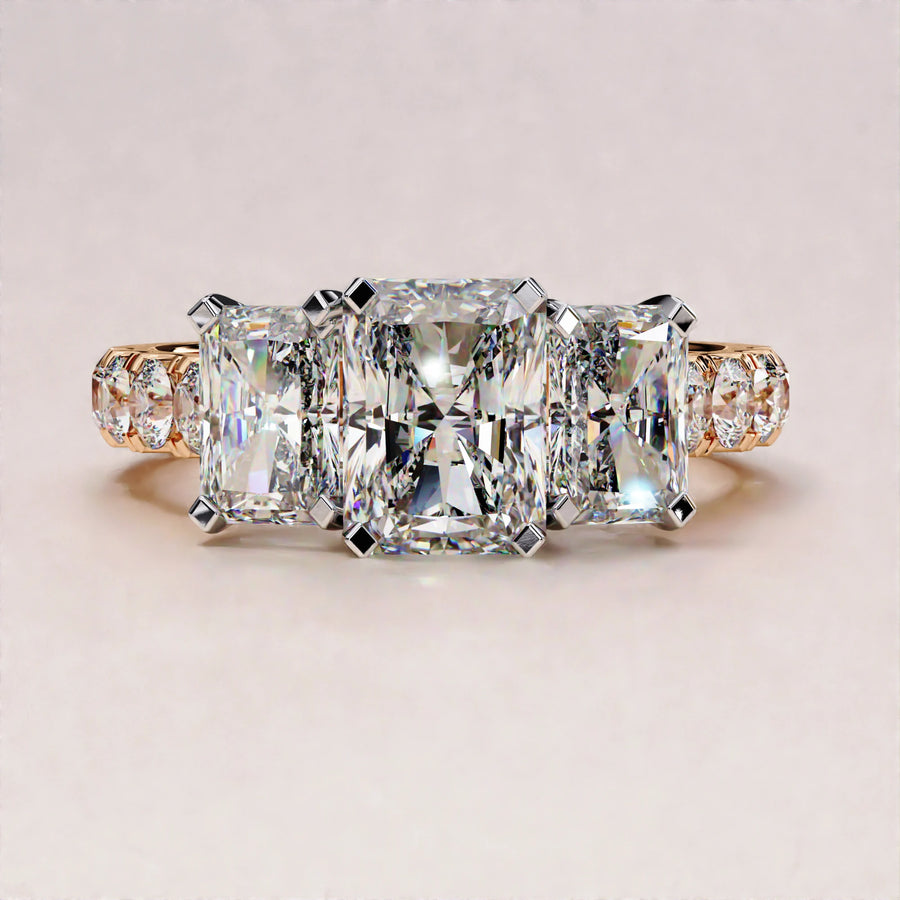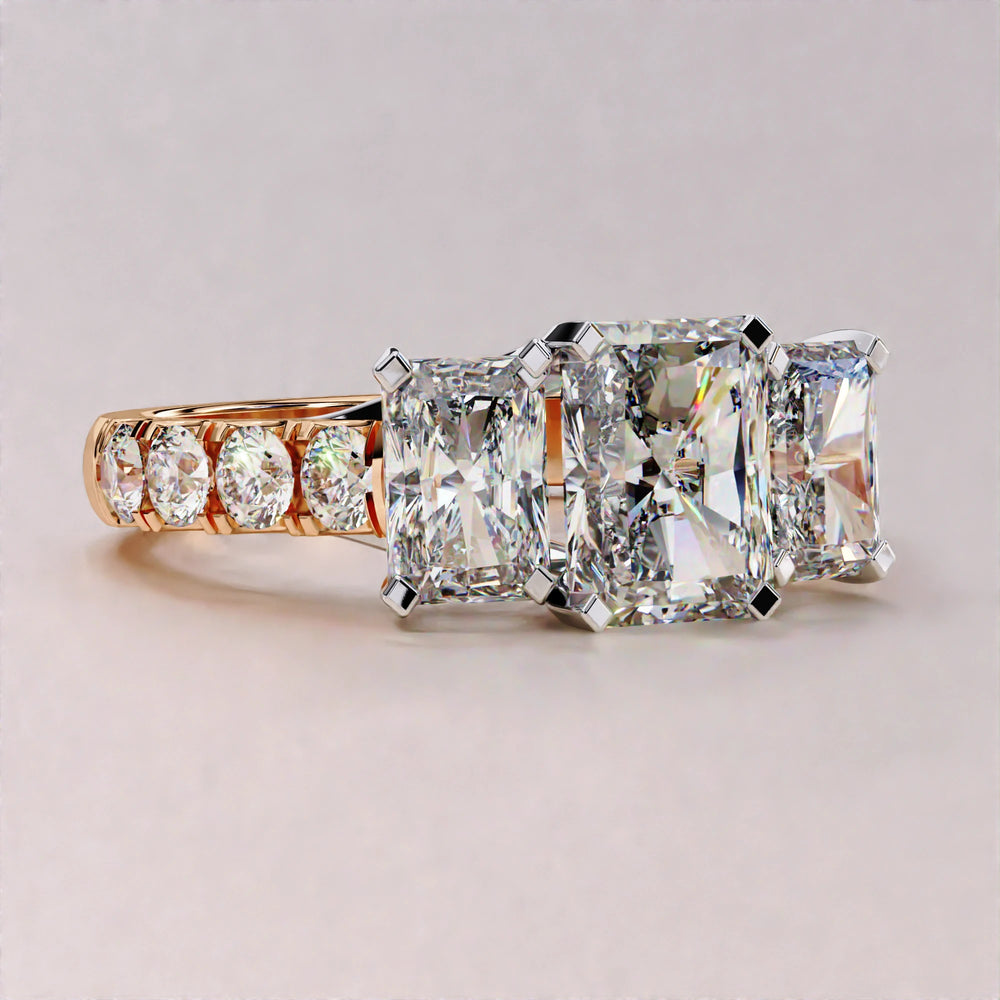Moissanite vs. Cubic Zirconia: What’s the Difference?
In the world of affordable diamond alternatives, Moissanite and Cubic Zirconia (CZ) are two of the most popular contenders. They offer dazzling sparkle at a fraction of the cost of natural diamonds, making them attractive choices for budget-conscious buyers and ethically minded consumers.
But when it comes to Moissanite vs. Cubic Zirconia, the differences go far beyond cost. From brilliance and durability to composition and value, these stones offer very different experiences.
In this comprehensive guide, we’ll explore everything you need to know about Moissanite vs. Cubic Zirconia, so you can make an informed decision when choosing the right gemstone for your engagement ring, fashion jewelry, or everyday wear.
What Is Moissanite?
Moissanite is a lab-created gemstone made of silicon carbide. It was first discovered in a meteor crater by French scientist Henri Moissan in 1893. Because natural Moissanite is incredibly rare, all commercially available Moissanite today is lab-grown.
Key Features:
-
Hardness: 9.25 on the Mohs scale
-
Brilliance: More fire than diamonds (rainbow sparkle)
-
Durability: Extremely tough and long-lasting
-
Price: Significantly lower than diamonds, higher than CZ
-
Ethical: Always lab-grown and conflict-free
Moissanite is known for its fiery sparkle and impressive toughness, making it an ideal alternative to diamonds in engagement rings and fine jewelry.
What Is Cubic Zirconia?
Cubic Zirconia (CZ) is a synthetic gemstone made from zirconium dioxide. It was first developed in the 1970s as a low-cost alternative to diamonds and is mass-produced today.
Key Features:
-
Hardness: 8–8.5 on the Mohs scale
-
Brilliance: High sparkle, but lacks depth
-
Durability: Can scratch and dull over time
-
Price: Very inexpensive and widely available
-
Ethical: Lab-made and eco-friendly
CZ mimics the look of diamonds but lacks the longevity and sparkle retention of Moissanite or diamonds.
Moissanite vs. Cubic Zirconia: A Side-by-Side Comparison
|
Feature |
Moissanite |
Cubic Zirconia (CZ) |
|
Composition |
Silicon carbide |
Zirconium dioxide |
|
Hardness |
9.25 (very hard) |
8–8.5 (softer) |
|
Brilliance (Sparkle) |
High fire & brilliance |
Sparkly but less fire |
|
Durability |
Resistant to scratches |
Prone to clouding & wearing |
|
Color |
Near-colorless or faint tint |
Can appear overly white |
|
Price |
$$ (Moderately priced) |
$ (Very affordable) |
|
Longevity |
Lasts a lifetime |
Dulls and scratches over time |
|
Ethics |
Lab-grown & sustainable |
Lab-grown & eco-friendly |
1. Brilliance & Sparkle
Moissanite is famous for its fire—a rainbow-like sparkle that's even more dramatic than a diamond’s. It has a higher refractive index (2.65–2.69) than both CZ and diamonds, giving it a vibrant flash.
Cubic Zirconia sparkles too, but lacks the depth and fire of Moissanite. Over time, its brilliance can fade, especially when scratched or exposed to chemicals.
Winner: Moissanite (for brilliance and fire)
2. Durability & Hardness
On the Mohs hardness scale:
-
Moissanite: 9.25
-
Cubic Zirconia: 8 to 8.5
While both are fairly hard, Moissanite is significantly more scratch-resistant and better suited for daily wear, especially for engagement rings or rings that see heavy use.
CZ is more prone to scratches, nicks, and losing its polish.
Winner: Moissanite (for long-term durability)
3. Cost Comparison
When it comes to price, Cubic Zirconia is much cheaper than moissanite. A 1-carat CZ can cost just a few dollars, while a 1-carat Moissanite might range from $300–$600, depending on cut and quality.
If you need something for short-term or occasional use, CZ is a budget-friendly option. For a lifetime wear or an engagement ring, Moissanite offers much better value.
-
Winner: Cubic Zirconia (for upfront affordability)
-
Moissanite (for long-term value)
4. Clarity and Color
Moissanite is usually near-colorless or can have a slight yellow, green, or gray tint in certain lighting, especially in larger stones. High-end brands offer colorless options (D-F grades).
Cubic Zirconia often looks too white, giving it an almost artificial appearance. It also lacks the "depth" seen in natural gemstones.
Winner: Moissanite (more natural appearance)
5. Ethical and Eco-Friendly
Both Moissanite and CZ are lab-created, making them conflict-free and environmentally friendly alternatives to mined diamonds. You can feel good about wearing either from an ethical standpoint.
Winner: Tie
So… Which Should You Choose?
-
Choose Moissanite if you want:
💍 Long-term durability
💍 Realistic sparkle and fire
💍 A sustainable, diamond-like look for engagement rings -
Choose Cubic Zirconia if you want:
💎 A temporary, low-cost sparkle
💎 Trendy or fashion jewelry
💎 An extremely budget-friendly diamond dupe
Final Thoughts:
While both Moissanite and cubic zirconia offer sparkle without the hefty diamond price tag, Moissanite stands out as the superior option for durability, brilliance, and long-term wear.
Whether you're shopping for an engagement ring, a promise ring, or everyday bling, knowing the difference between Moissanite vs. cubic zirconia helps you choose a gemstone that suits both your lifestyle and your budget.
Also read: How to Choose an Engagement Ring: The Ultimate Guide























